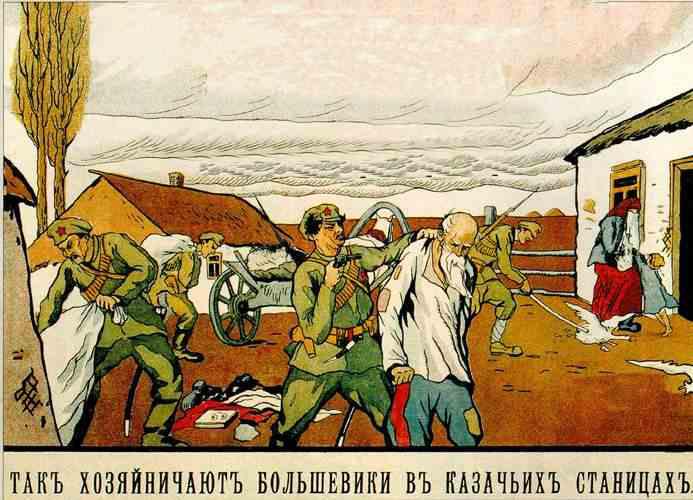A guest post and Babalú exclusive from Nathalie Vogel:
Commemoration of the Genocide against the Cossack people

January 24, 1919, is remembered as the darkest day in Cossack history.
Today marks the 94th anniversary of the decossackization, the genocide, against the Cossack people. Obeying a secret note from their party, the Bolsheviks followed their orders to the letter. They conducted “mass terror against wealthy Cossacks, exterminating all of them,” and carried out “merciless mass terror against any and all Cossacks taking part in any way, directly or indirectly, in the struggle against Soviet power.” Massive executions, looting, collective rapes, and deportations ensued. The genocide against the Cossack people constitutes the first genocide in Soviet history, but many more were to follow.
While in the past, official Soviet narratives always denied the very existence of the order of extermination, officials of the Russian Federation have found a singular way of coming to terms with the burdens of the totalitarian heritage of their country. They recently engaged in an unprecedented re-writing of Cossack history by recreating a Cossack movement “from scratch.” Some scholars point out the highly questionable bases of this attempt, stressing an alleged Russian supremacy that hides behind a disturbingly aggressive nationalistic agenda. This could not be further from the truth regarding the real Cossack heritage, which is multi-ethnic and multi-religious with a clear distrust towards any form of centralized government. The Kremlin, of course, is less inclined to stress this aspect of Cossack history.
However, genuine Cossacks do remember how and why their ancestors had to escape to Western Europe, Canada, and North and South America. Today, their descendants are organized in communities (called stanitsa), administered by a democratically elected assembly (called krug), headed by a chieftain (called ataman). They usually rally around the Orthodox Church and still observe Cossack traditions. None of them has ever been seen swinging the saber against other minorities. They peacefully live in their new home countries . In Latin America, the largest Cossack communities are to be found in Chile and in Argentina.
Nathalie Vogel is a Washington based analyst of Cossack origin and a member of the Cossack Congress of America

Comments are closed.